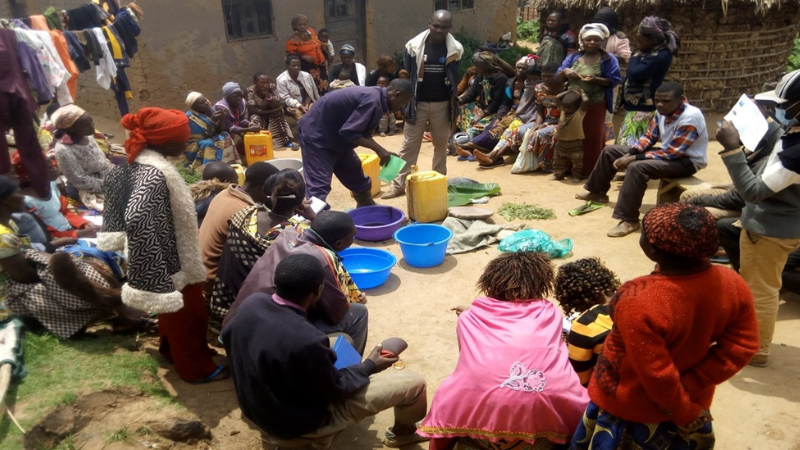by ZAWADI VIHUMBIRA Kahindo -Ligue des Organisations des Femmes Paysannes du Congo (LOFEPACO)
Description
COVID-19 emerged at a time when the agricultural sector in our region was facing climatic disruptions due to periods of uncontrolled drought and rainfall, especially in areas where market gardening and food crops were grown, which consequently experienced drops in agricultural yields following the rotting of certain crops still on the ground and diseases that attacked certain plants. While farmers were preparing to face these plagues by their resources, COVID-19 was declared and led to the restriction of certain activities, notably transport, the closure of certain borders, and the importation of certain phytosanitary products, mainly from Uganda. COVID-19 has amplified the effects of climate change to the great dismay of small-scale farmers. Among the practices we advocated were soil protection and conservation practices in the fields by building terraces along the contour farming measured by the ‘A-triangle,’ reducing the speed of run-off water by diverting it to the field, improving the ridging system, which is more pronounced with row seeding, ridging, and judicious choice of cover crops, while encouraging short-cycle crops as part of resilience. We also urged producers to combine farming with livestock for organic fertilizer production. The third practice was composting (in piles) and the production of biopesticides based on local materials
Results
Following the adoption of the mitigating practices, farmers were able to put significant quantities of agricultural products on the market, thus maintaining a certain balance in food security. Although there was an increase in the prices of some agricultural products (in 2020 when COVID-19 was declared), significant improvements were noted from the year 2021 onwards as agricultural markets were flooded, especially in the first two quarters.
Climate smartness*
This case outlines how climatic and non-climatic shocks can trigger potential changes in the way the food system operates. Through the CSA lens, the practices implemented have contributed to preserve or enhance soil health. This is an important first step to ensure a sustainable agricultural production, as these interventions boost soil´s biophysical and chemical characteristics —making efficient use of soil´s water— while contributes to increase crop yield and quality under adverse environmental conditions. Another element that reinforces farmers´ resilience are the knowledge sharing actions, particularly those that enable diversification of the farm system by integrating livestock as an alternative, local and sustainable, source of fertilizers that is directly linked with complementary CSA practices such as composting and biopesticides. These alternatives, not only help to reduce production costs, but also to increase adaptation capacity and resilience of the agroecosystem by minimizing overall carbon footprint and environmental impact, as has been recognized in Life Cycle Assessment (LCA) studies in the agricultural context (van der Werf et al., 2020; Jian et al., 2021). This implies positive effects on provisioning, regulation and support ecosystems services, maintaining key dynamics such as food and fresh water provision; erosion and pest and diseases regulation; soil formation and nutrient cycling, among others.
*This is done in the framework of climate-smart agriculture (CSA) approach. Climate-smartness in agriculture means understanding impacts of climate change and variability along with the agricultural activity, which includes the planning of what crop to plant, when to plant, what variety to plant and what type of management practices are needed to reduce the impact on the environment (e.g. emissions reduction), maintain or increase productivity (e.g. yields) while increasing resilience and improving livelihoods.


